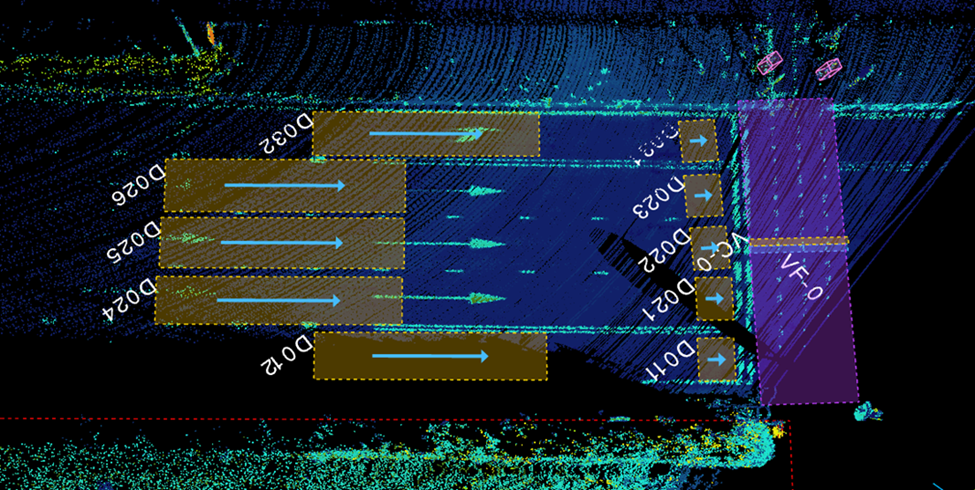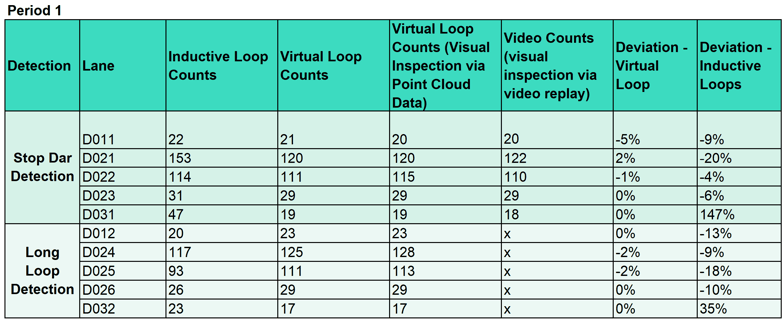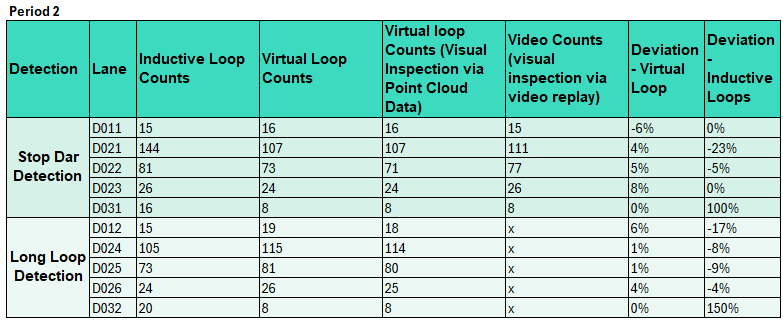Evaluation Of SIMPL-Intersection Compared To Inductive Loops In Amsterdam, Netherlands
Context and background
Noord-Holland is exploring ways to cost effectively enhance road user detection to improve traffic flow at intersections while providing enhanced datasets (e.g. pedestrian and bicycle data). Currently, Noord-Holland primarily utilizes inductive loops for vehicle detection and actuation on controlled intersections. An important requirement for replacing inductive loop is the ability to accurately detect vehicles. Different technologies have been tested in the past, but none were able to meet the requirements on availability, reliability, and price. Lidar technology has emerged as a promising solution due to its high accuracy, reliability, privacy and material return on investment.
Seyond, in collaboration with Noord-Holland, conducted a test to evaluate the performance of its SIMPL-Intersection ITS solution, compared to the existing inductive loop system. Two Falcon Prime lidar sensors were installed at a large intersection in the vicinity of Schiphol Amsterdam Airport, with the objective of assessing their accuracy in detecting vehicles at the stop bar and on the second loop further up on the approach.
The lidar systems were operational for a period of 6 months in different weather conditions.
Test Methodology
The test was conducted over two 15-minute periods during the morning commute on a five-lane approach. Using Seyond’s perception software, virtual detection zones, called virtual loops, were set up in the exact same location as the existing inductive loop sensors.

Two manual visual inspections were performed to establish ground truth:
- One inspection was conducted using point cloud data from the lidar sensors to manually count vehicles.
- The second inspection utilized video camera recordings, which provided a visual reference for vehicles stopped at the stop bar. The video footage did not cover the inductive loops placed further behind the stop bar.
Video recordings were used as the ground truth for comparing inductive loops and lidar performance at the stop bar, while the point cloud data was used for evaluating advance detection beyond the stop bar.
Results

Results obtained during the first 15-minute period showed very small deviation for the SIMPL-Intersection’s virtual loops (between -5% and 2%, with a majority of 0%) while the inductive loop showed deviation from -20% to 147%.

Results obtained during the second 15-minute period showed a slightly more elevated deviation for the SIMPL-Intersection’s virtual loops, between -6% and 8%, while the inductive loop showed deviation from -23% to 150%, indicating issues with the loops D031 and D032.
Total Results

Stop Bar Detection and Count Accuracy:
- Lidar detection system: Average deviation of 2%
- Inductive loop system: Average deviation of -17%
Long Loop Detection and Count Accuracy (Vehicles Approaching the Intersection):
- Lidar detection system: Average deviation of 0%
- Inductive loop system: Average deviation of 9%
Conclusion
The results demonstrate that Seyond's lidar-based SIMPL-Intersection solution provides higher accuracy in vehicle detection than traditional inductive loops installed at the current intersection. The lidar system exhibited minimal deviation, ensuring more precise vehicle counting both at the stop bar and behind it. This is in line with studies performed at other locations such as Tampere Finland, and Columbia County, Florida, USA.
This study underscores the potential of lidar technology in enhancing intersection traffic management by offering more reliable and accurate detection capabilities than conventional inductive loops. The findings support further exploration and potential large-scale implementation of lidar-based detection systems in Noord-Holland’s traffic infrastructure.